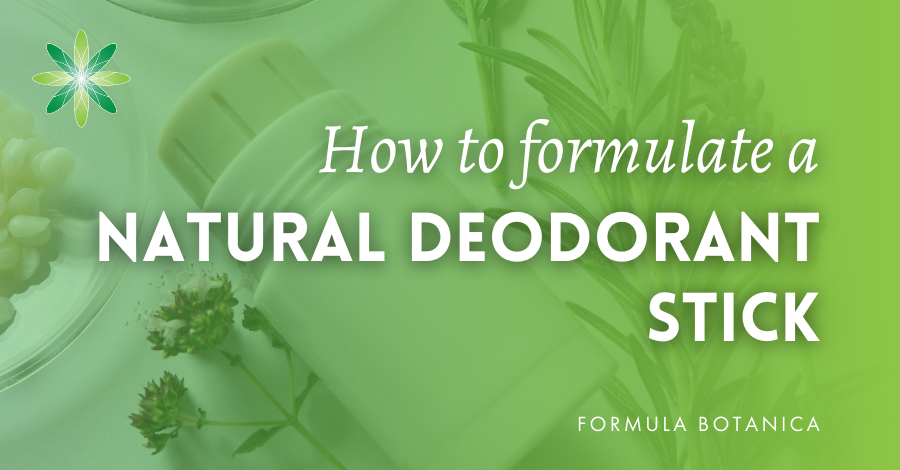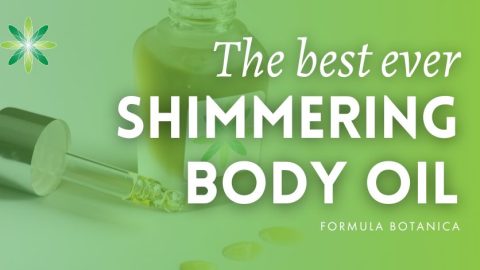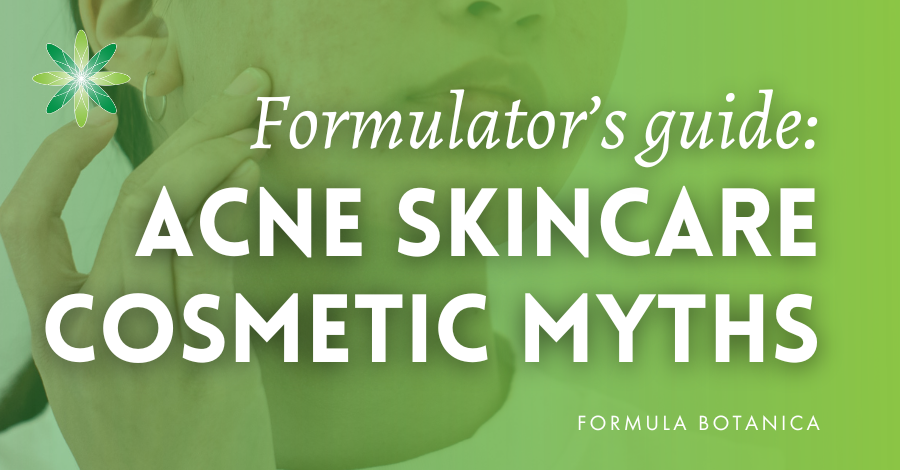Podcast 57: Do natural deodorants work?Due in part to the paraben story, natural deodorant sticks such as our formulation below have been propelled into the spotlight. First, let’s talk about the background to deodorants: how we perspire; what deodorants do; and how our formulation works.
A short introduction to the physiology of perspiration
Perspiration is a physiological process by which the human body regulates its temperature. There are millions of sweat glands over the surface of the skin that produce litres of sweat a day. The fluid secreted from the eccrine sweat gland is composed of a solution of sodium chloride, urea, lactates, and other metabolic wastes. Apocrine glands secrete a fluid rich in lipids, as well as fatty acid substances that are odourless. However, this nutrient-rich composition makes an ideal medium for microbial growth and microbial metabolic activity. As the bacteria go to work, odoriferous molecules are formed that are mostly considered unpleasant. The podcast with Nala Care looks at how sweat, while a natural and core part of how the body functions, is linked to shame and body image. Make this @FormulaBotanica on-trend natural deodorant stick with a fresh mint scent. Sustainably packaged and waterless, this deo stick is easy to formulate. #naturaldeodorant #botanicaldeodorant #naturalcosmetics Share on X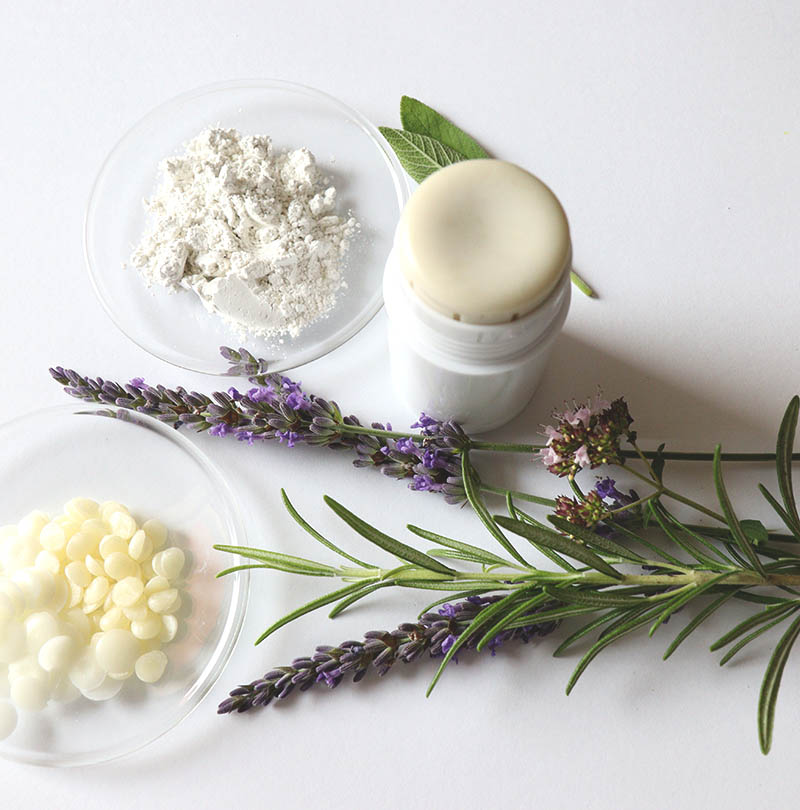 Deodorant products are developed to mask or prevent the formation of odoriferous compounds and this can be done in various ways:
Deodorant products are developed to mask or prevent the formation of odoriferous compounds and this can be done in various ways:
- Topical application, as a short-term solution, of olfactory compounds such as fragrances that can mask odours. Some fragrances, however, are developed to complement body odour.
- Topical application of anti-microbial agents to suppress the bacterial growth (or to minimise the amount of bacteria present in the applied area).
- Topical application of enzyme-inhibiting agents to supress the metabolic activity of microbes, thereby minimising the formation of small, volatile, odoriferous molecules.
- Application of ingredients that will form complexes with odoriferous molecules (neutralising them) to make them less volatile.
Packaging deodorant sticks
A cardboard tube is an ideal choice for this formula, but you can also use PET (post-consumer recycled plastic) packaging if that works better for you. We found that the formula comes nicely out of the tube, which is important for its ease of use. Texture is everything in a deodorant stick. Achieving a formulation that is neither too hard nor too soft is paramount if the natural deodorant stick is to work well dispensed from a tube.Frequency of deodorant application
Natural deodorant sticks should be applied to clean dry skin. The frequency of use mostly depends on the physical activity or emotional state of the individual (stress increases our propensity to perspire), with 2-3 applications a day sounding reasonable for this type of product. Our natural deodorant stick formulation does not interfere with the natural physiological process of perspiration and does not block sweat or sebum glands.Hygiene and natural deodorants
It is important to say that proper hygiene is a crucial step to minimising the formation of body odour. The more sebum and sweat produced by glands, the more substrate there is for microbial growth which in turn increases the amount of volatile metabolised molecules. That is why deodorising products are frequently enriched with ingredients that inhibit sebum production.Natural ingredients
Natural deodorants contain ingredients that do not interfere with the physiological process of perspiration. They act instead to minimise microbial growth and to form complexes with, or absorb odoriferous molecules. Usually, natural deodorants contain clays, powders, starches, natural plant extracts and essential oils to provide natural protection. Additional active ingredients such as potassium alum, zinc oxide, zinc ricinoleate may feature too.About Potassium alum
Our deodorant formulation includes potassium aluminium sulfate or potassium alum. The word aluminium starts alarm bells ringing, however there is often confusion between potassium alum and synthetic aluminium-derived alternatives. In order to dispel the fears and clarify any misunderstanding, we address the differences below. Humans have been mining potassium alum (also known as kalunite) since Ancient Egyptian times. Potassium, aluminum and the sulfate ion are widely found in food and in the human body. In cosmetics, potassium alum is used as an astringent, which makes it perfect for a natural deodorant formulation. You might also have seen potassium alum sold as a deodorant crystal, which is rubbed under the arms – humans have been doing this for a very long time. Synthetic deodorants often contain Aluminium Chloride or Aluminium Chlorohydrate, which can block sweat ducts and glands and which give these deodorants anti-perspirant functionality; this is also where the bad press for aluminium has come from. On the other hand, potassium alum prevents the odour-causing bacteria from multiplying, as it is naturally antimicrobial. Potassium alum is not absorbed by the skin in any significant amounts and it has GRAS status by the FDA. There is no clear evidence it is causes harm when applied to the skin and it is even accepted by certifying bodies such as Ecocert/Cosmos and Natrue. Formula Botanica tries to avoid using bicarbonate of soda in deodorant formulations (as is frequently done in DIY recipes) because it raises the pH of the skin and can cause irritation. For that reason, we used potassium alum for this formulation.Natural deodorant stick: our key ingredients
Fractionated coconut oil / caprylic capric triglycerides This is a light, odourless oil that is resistant to oxidation and is not sensitive to heat. It has a pleasant, non-greasy feel and is suitable for formulations where a dry skin-feel is required. Waxes Beeswax and sunflower seed wax provide a suitable texture and thickness to the formula. Cetearyl alcohol This supports the deodorant stick’s viscosity and gives a pleasant skin-feel as well as glide to the formula. Zinc ricinoleate This is a highly-effective deodorising ingredient based on the zinc salt of ricinoleic acid. It does not interfere with natural perspiration and has no bactericidal/fungicidal properties and therefore does not interfere with the skin’s microbiome. Potassium alum Potassium aluminium sulphate is an inorganic salt formed by large crystals that can be ground to create a very fine powder. With molecules too large to be absorbed by the skin, potassium alum is used frequently in deodorants to boost their odour-neutralising capabilities. If you cannot source this ingredient or wish not to use it, an addition of kaolin clay (or any other clay, starches or bentonite) can serve as a suitable alternative. Kaolin clay Clays are efficient cleansers and are frequently added to formulations as fillers, but they are also able to bind moisture, oil, abundant sebum and bacteria. Kaolin clay has anti-inflammatory and cell-stimulating properties. Essential oils These provide a pleasant, aromatherapy-effect to the formula, and also have antimicrobial properties. Vitamin E Vitamin E has antioxidant properties that help protect the formula’s sensitive ingredients from oxidation. Bacti-pur complex This is an antimicrobial blend obtained by supercritical fluid extraction. It contains plant extracts of curcuma, liquorice, oregano, clove, hop, sage and ajowan and has a strong antimicrobial and antioxidant properties.Our formulation: natural deodorant stick
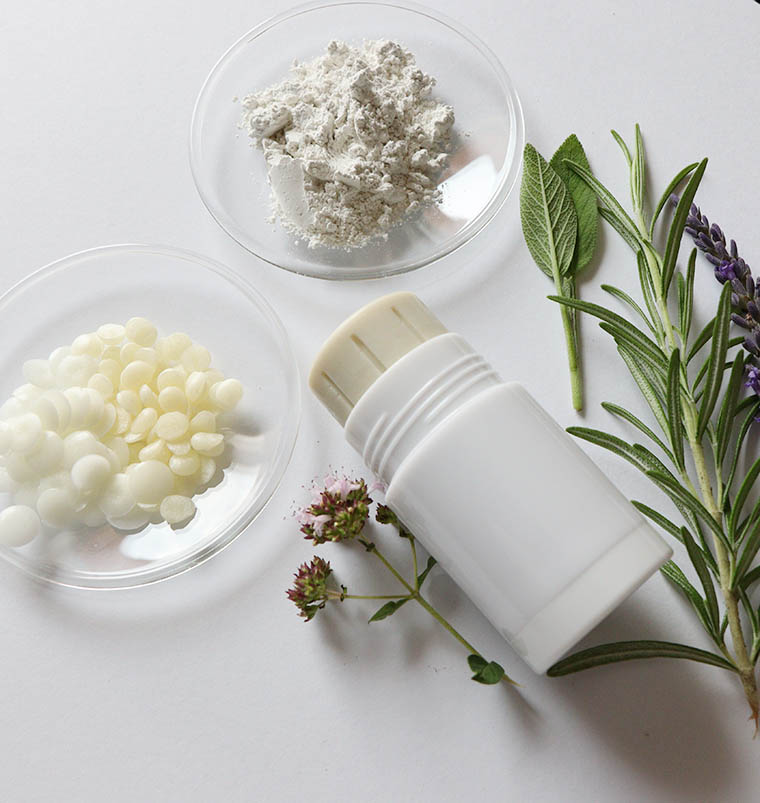 Makes: recommended batch sizes 50g/100g.
Time taken: 30 minutes.
Level: Beginner-level formulation to personalise and adapt.
Makes: recommended batch sizes 50g/100g.
Time taken: 30 minutes.
Level: Beginner-level formulation to personalise and adapt.
| Phase | Ingredients | INCI | Weight (g) |
| A | Fractionated coconut oil | Caprylic capric triglycerides | 45.00 |
| A | Shea butter | Butyrospermum Parkii Butter | 5.00 |
| A | Beeswax | Cera flava | 5.00 |
| A | Sunflower seed wax | Helianthus annuus seed wax | 8.00 |
| A | Cetearyl alcohol | Cetearyl alcohol | 10.00 |
| A | Zinc ricinoleate | Zinc ricinoleate | 3.00 |
| B | Potassium alum | Potassium aluminium sulphate | 5.00 |
| B | Kaolin clay | Kaolin | 17.00 |
| C | Vitamin E | Tocopherol | 0.80 |
| C | Mint essential oil | Mentha arvensis | 1.00 |
| C | Bacti-pur complex (antimicrobial blend) | Salvia triloba leaf extract, Helianthus annuus seed oil, Curcuma xanthorrhiza root extract, Humulus lupulus cone extract, Glycyrrhiza uralensis root extract, Eugenia caryophyllus flower extract, Origanum vulgare leaf extract, Trachyspermum ammi fruit extract | 0.20 |
| Total: 100.00 |
Method of Manufacture
- Weighing
Prepare and weigh out all ingredients for phases A, B and C as separate phases.
- Phase A
Melt phase A ingredients in a water bath.
- Phase B
Make a mixture of phase B and put it into melted phase A, mixing in properly to avoid lumps forming.
- Phases A and B
Make a homogeneous mixture of phases AB, remove it from the water bath, and start cooling it down slowly.
- Phase C
Add heat-sensitive ingredients (Phase C) when the AB blend is below 60°C. Mix well, and pour immediately into your desired container.
- Cool down
Let the blend cool down completely before use. Label your deodorant sticks with a batch number and date for your reference.
Formulation Notes
- You can experiment with different clays or starches to achieve the right texture and skin feel. If you wish to experiment with different carrier oils or even oils with a silicone-like feel on the skin, such as LexFeel natural, Coco caprylate caprate or Isoamyl laurate, you can do so as well.
- If you do not have the combination of waxes we use, you can swap for other waxes. Just make sure the final texture is not too soft or too thick. It should be pleasant to apply and have a nice glide on the skin. Zinc oxide can be included into this formula too.
- You can select different essential oils and plant extracts to suit your needs and preferences. If you can’t find Bacti-pur, you can search for similar antimicrobial blends or think about using individual plant extracts from its composition such as curcuma, rosemary and sage. You will need to check the dermal limits of any alternative blends or extract ingredients you use.
- Although this is a hot-pour method, it is not possible to add heat-sensitive ingredients below 40°C – the blend of waxes and powders would be too thick to incorporate those properly. This is why we need to add them at the very end of the formulation process (to keep their contact with heat to a minimum) and to add an antioxidant to protect these sensitive ingredients from heat-induced oxidation.
Suggested suppliers
Formulator sample shop EU and in the US. Manske Shop (Germany / EU) Nature Store (EU) Aromazone (France / EU) Lotioncrafter (US) Making cosmetics (US, international)FREE TRAINING
Learn how to become an
Organic Skincare Formulator
FREE TRAINING
How to become an
Organic Skincare Entrepreneur
FREE TRAINING
How to become an
Organic Skincare Entrepreneur
Leave us a comment

Miroslava is a former grading tutor at Formula Botanica. She has a Ph.D in neuroscience, expertise in biology and chemistry, and a lifelong passion for natural cosmetic formulation.

